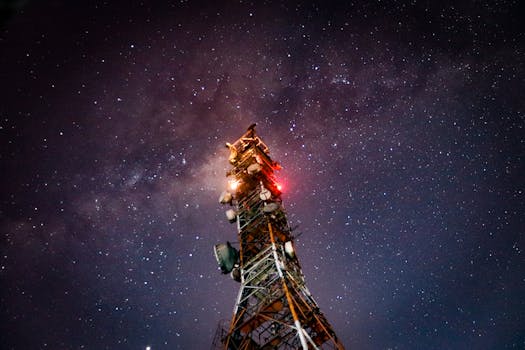
MEO Satellites: Revolutionizing Global Communications with Medium Earth Orbit Technology
Medium Earth Orbit (MEO) satellites are revolutionizing the way we communicate globally, offering faster and more reliable connections than traditional geostationary satellites. With their unique orbit, MEO satellites can provide seamless and continuous coverage of the entire Earth, making them ideal for a wide range of applications, including telecommunications, navigation, and Earth observation.
What are MEO Satellites?
MEO satellites are a type of satellite that orbits the Earth at an altitude of approximately 2,000 to 36,000 kilometers, which is higher than low Earth orbit (LEO) satellites but lower than geostationary orbit (GEO) satellites. This orbit allows MEO satellites to have a longer lifespan and to cover a larger area of the Earth’s surface than LEO satellites, while also having a lower latency than GEO satellites.
MEO satellites are often used for telecommunications, providing internet connectivity, voice, and data services to remote and underserved areas. They are also used for navigation, such as the Global Positioning System (GPS), and for Earth observation, such as monitoring weather patterns and natural disasters.
Advantages of MEO Satellites
MEO satellites have several advantages over traditional GEO satellites, including lower latency, higher bandwidth, and improved reliability. Because MEO satellites are closer to the Earth than GEO satellites, they can provide faster and more reliable connections, making them ideal for applications that require real-time communication, such as video conferencing and online gaming.
MEO satellites also have a higher bandwidth than GEO satellites, allowing them to support a larger number of users and to provide faster data transfer rates. Additionally, MEO satellites are less prone to interference from other satellites and terrestrial systems, making them a more reliable option for critical communications.
Applications of MEO Satellites
MEO satellites have a wide range of applications, including telecommunications, navigation, and Earth observation. In telecommunications, MEO satellites are used to provide internet connectivity, voice, and data services to remote and underserved areas. They are also used for backhaul services, providing connectivity between cell towers and the core network.
In navigation, MEO satellites are used for GPS and other satellite-based navigation systems, providing location information and timing signals to receivers on the ground. In Earth observation, MEO satellites are used to monitor weather patterns, track natural disasters, and study the Earth’s climate and environment.
Conclusion
In conclusion, MEO satellites are revolutionizing the way we communicate globally, offering faster and more reliable connections than traditional geostationary satellites. With their unique orbit, MEO satellites can provide seamless and continuous coverage of the entire Earth, making them ideal for a wide range of applications, including telecommunications, navigation, and Earth observation.
As the demand for global connectivity continues to grow, MEO satellites are likely to play an increasingly important role in meeting this demand, providing fast, reliable, and affordable connections to people and organizations around the world.

